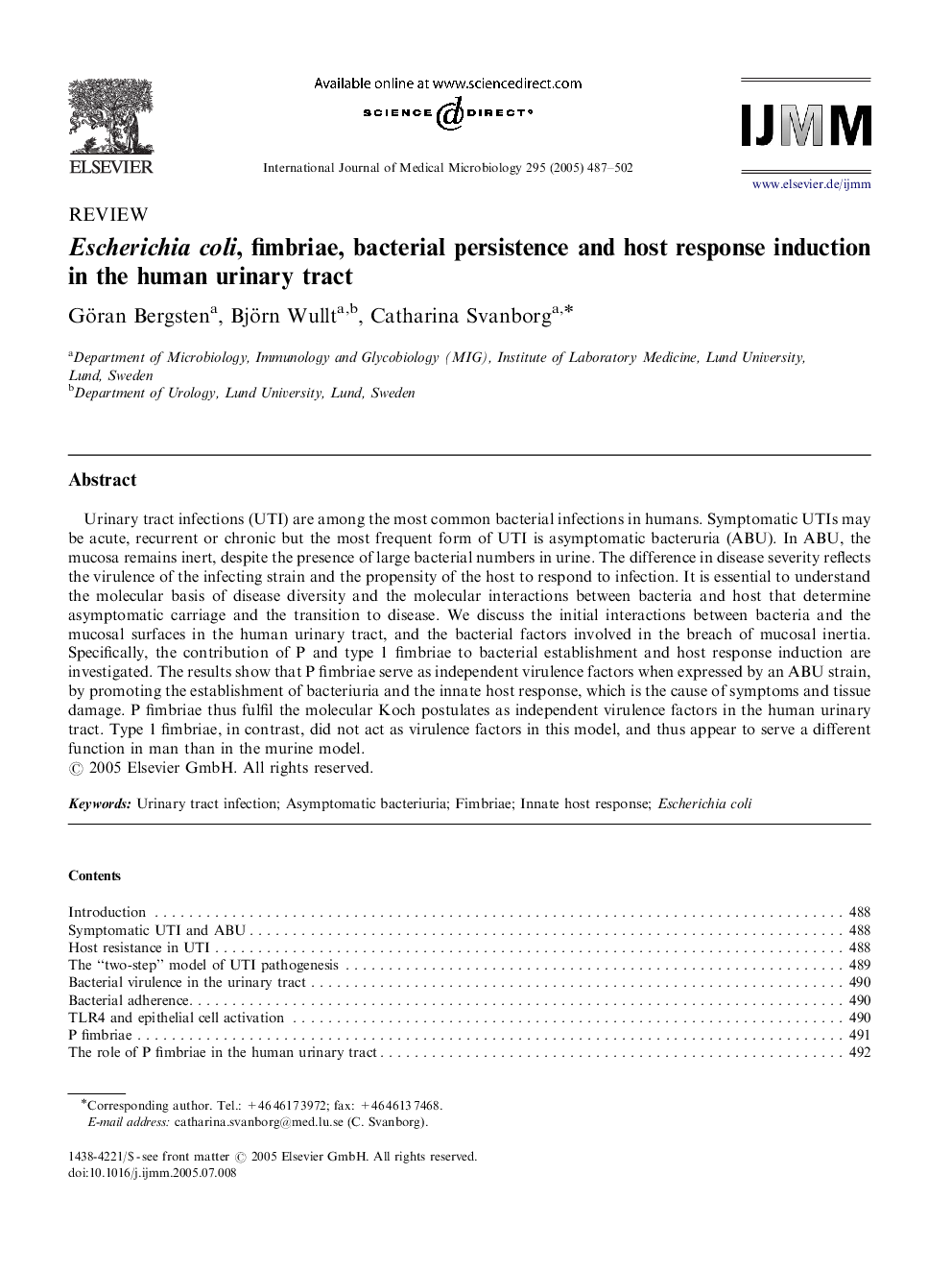| کد مقاله | کد نشریه | سال انتشار | مقاله انگلیسی | نسخه تمام متن |
|---|---|---|---|---|
| 9899150 | 1543762 | 2005 | 16 صفحه PDF | دانلود رایگان |
عنوان انگلیسی مقاله ISI
Escherichia coli, fimbriae, bacterial persistence and host response induction in the human urinary tract
دانلود مقاله + سفارش ترجمه
دانلود مقاله ISI انگلیسی
رایگان برای ایرانیان
کلمات کلیدی
موضوعات مرتبط
علوم زیستی و بیوفناوری
بیوشیمی، ژنتیک و زیست شناسی مولکولی
بیوشیمی، ژنتیک و زیست شناسی مولکولی (عمومی)
پیش نمایش صفحه اول مقاله

چکیده انگلیسی
Urinary tract infections (UTI) are among the most common bacterial infections in humans. Symptomatic UTIs may be acute, recurrent or chronic but the most frequent form of UTI is asymptomatic bacteruria (ABU). In ABU, the mucosa remains inert, despite the presence of large bacterial numbers in urine. The difference in disease severity reflects the virulence of the infecting strain and the propensity of the host to respond to infection. It is essential to understand the molecular basis of disease diversity and the molecular interactions between bacteria and host that determine asymptomatic carriage and the transition to disease. We discuss the initial interactions between bacteria and the mucosal surfaces in the human urinary tract, and the bacterial factors involved in the breach of mucosal inertia. Specifically, the contribution of P and type 1 fimbriae to bacterial establishment and host response induction are investigated. The results show that P fimbriae serve as independent virulence factors when expressed by an ABU strain, by promoting the establishment of bacteriuria and the innate host response, which is the cause of symptoms and tissue damage. P fimbriae thus fulfil the molecular Koch postulates as independent virulence factors in the human urinary tract. Type 1 fimbriae, in contrast, did not act as virulence factors in this model, and thus appear to serve a different function in man than in the murine model.
ناشر
Database: Elsevier - ScienceDirect (ساینس دایرکت)
Journal: International Journal of Medical Microbiology - Volume 295, Issues 6â7, 5 October 2005, Pages 487-502
Journal: International Journal of Medical Microbiology - Volume 295, Issues 6â7, 5 October 2005, Pages 487-502
نویسندگان
Göran Bergsten, Björn Wullt, Catharina Svanborg,